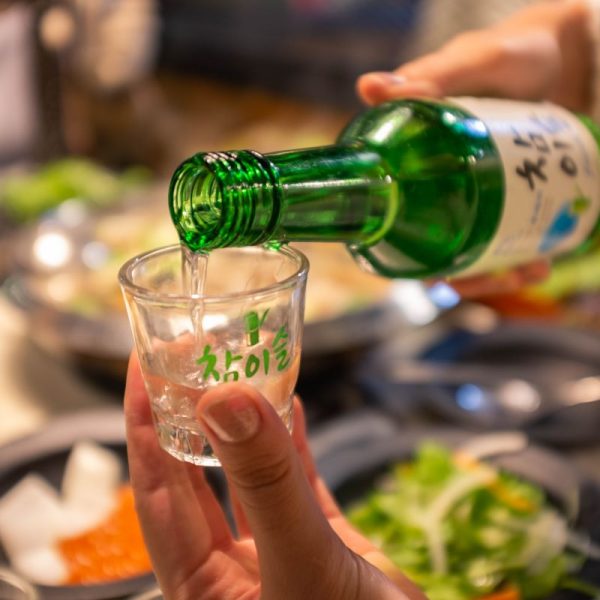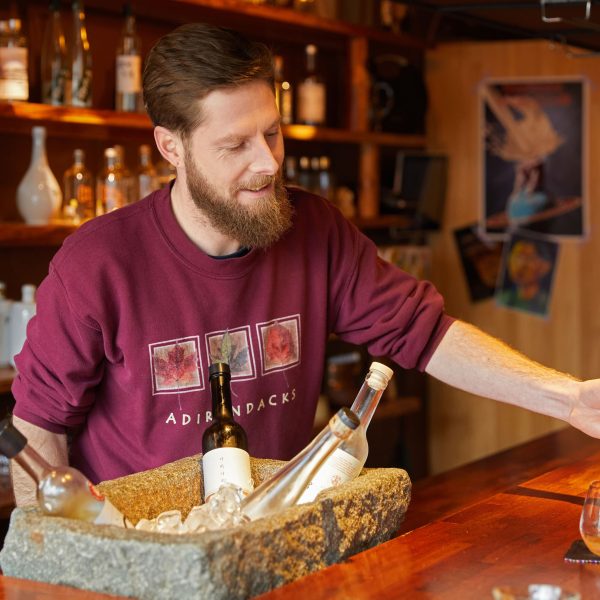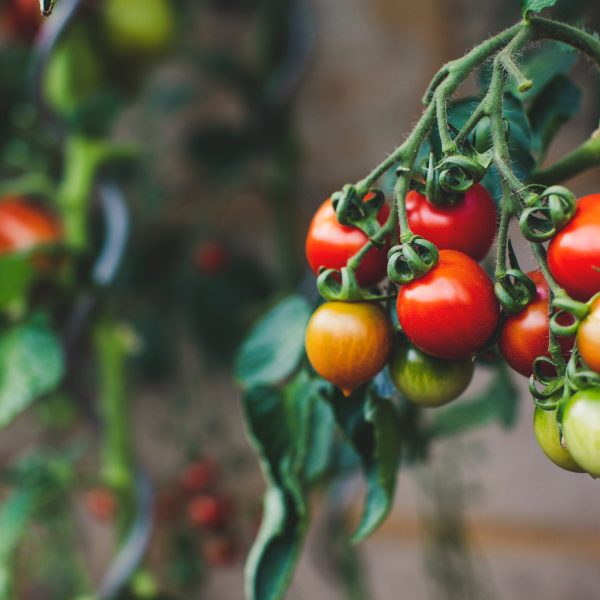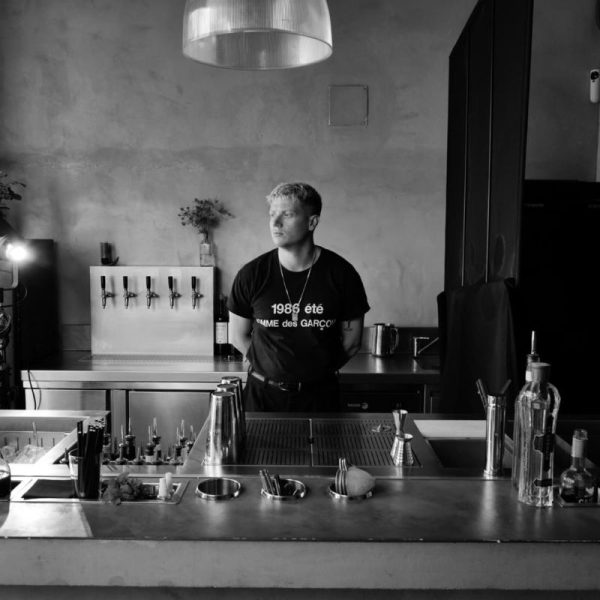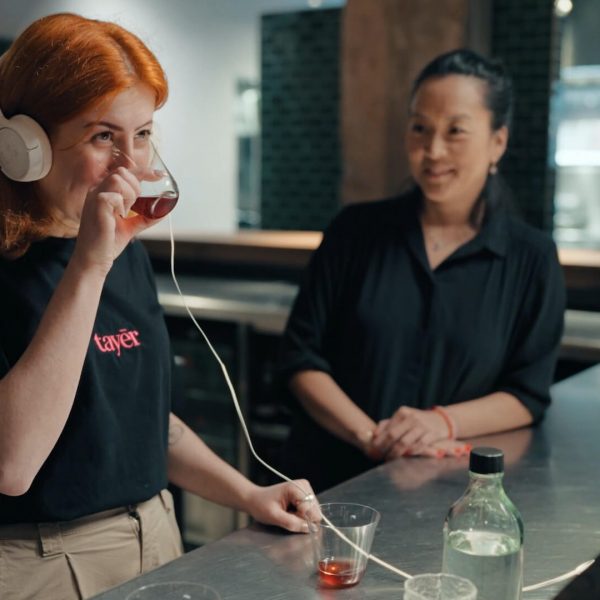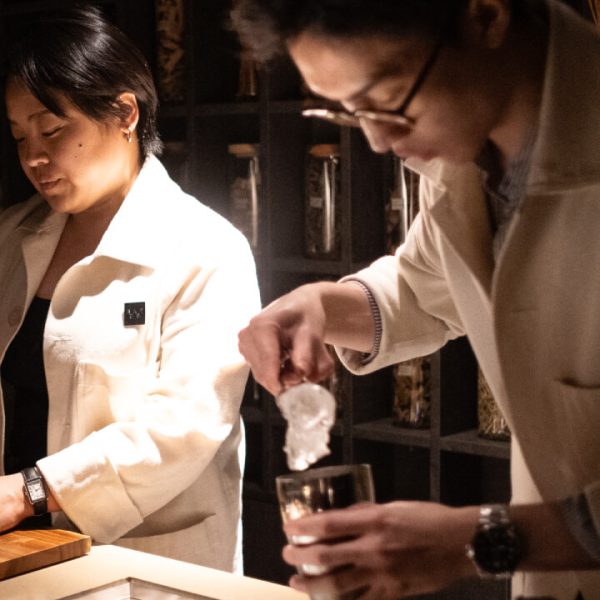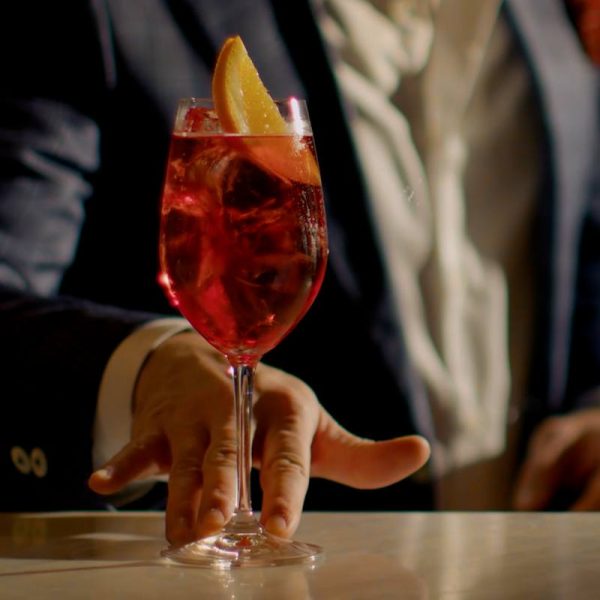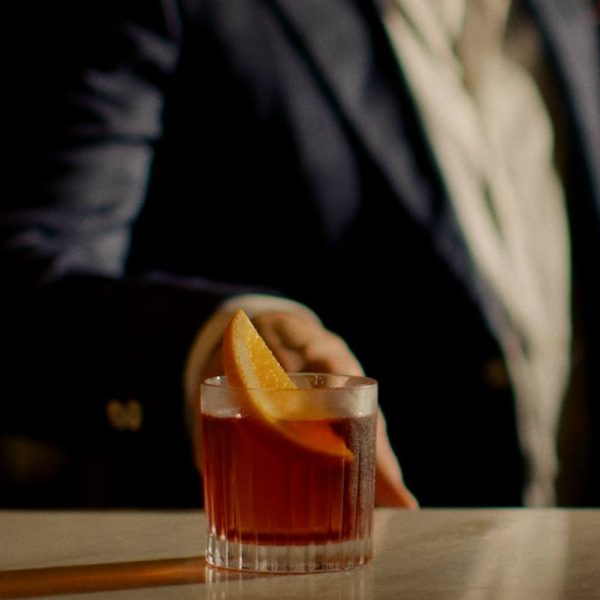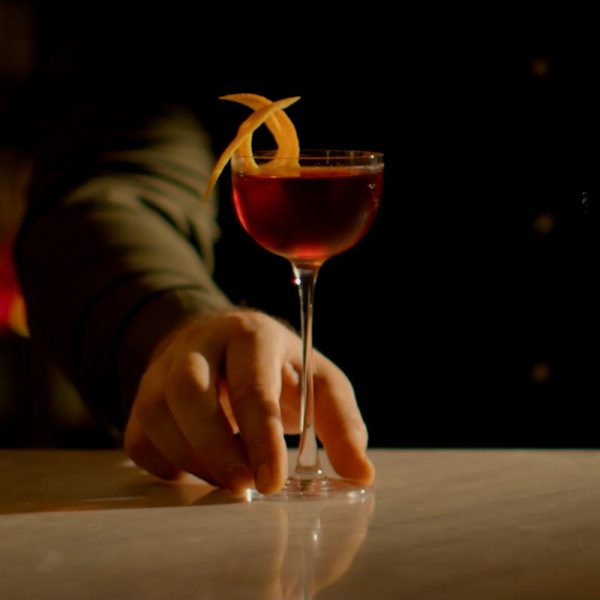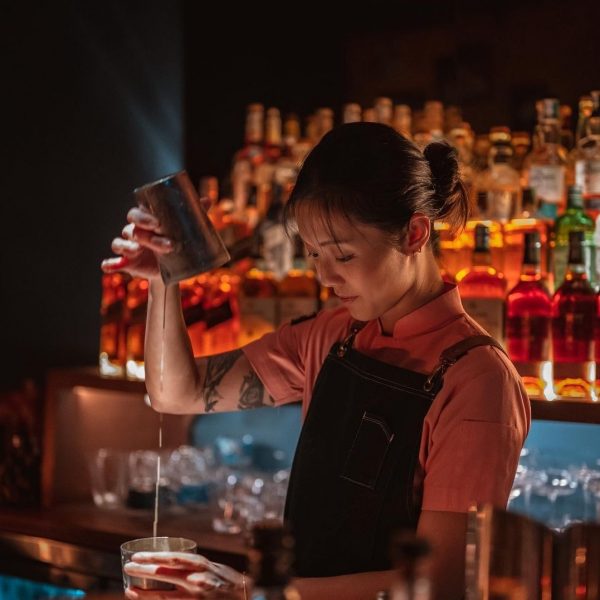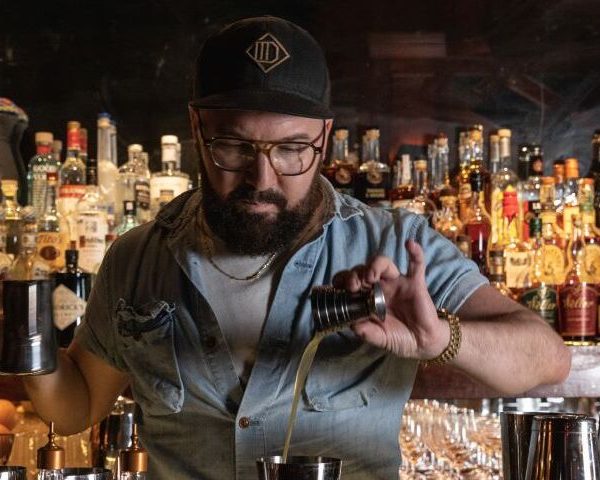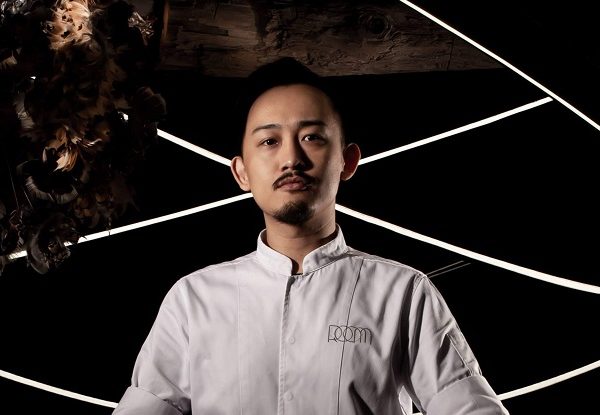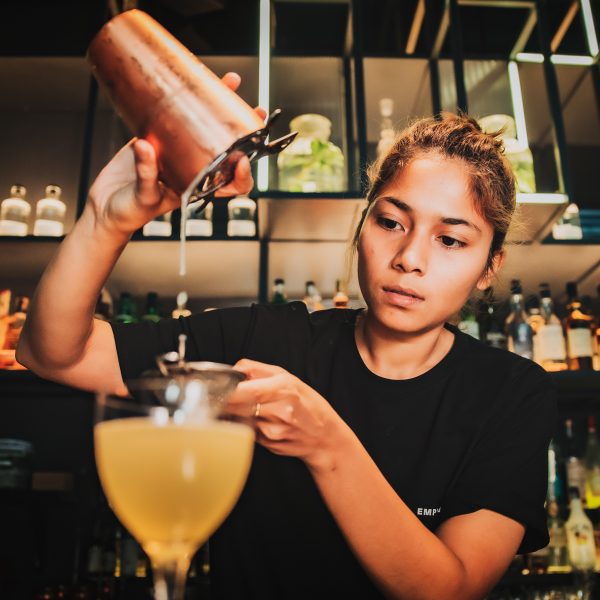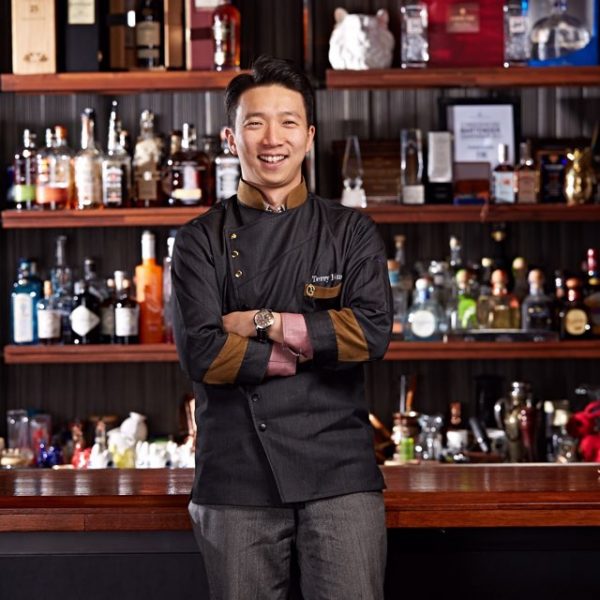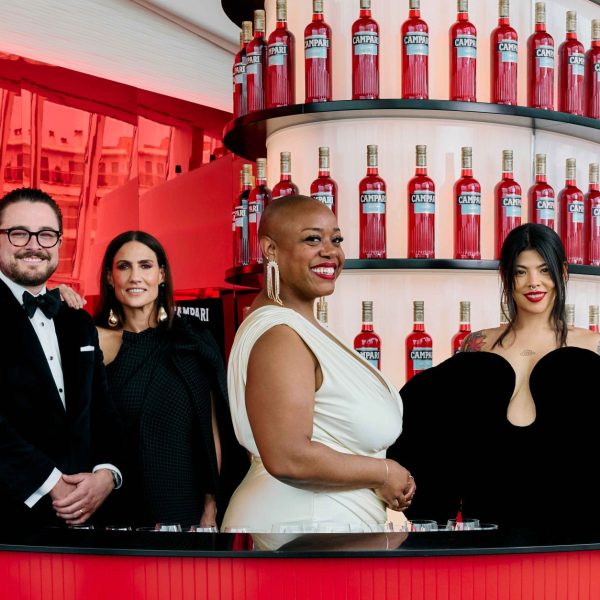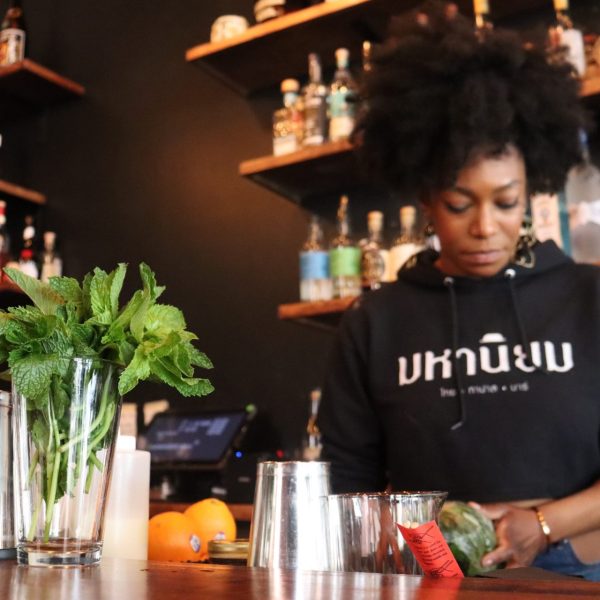How Bartenders Think, When Designing Bar Tools
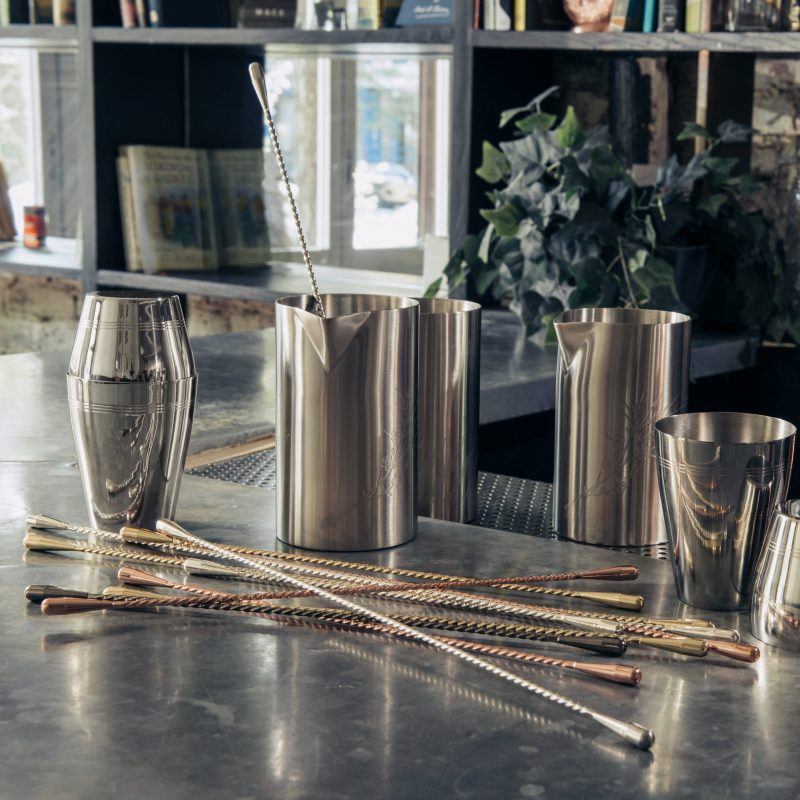
Very often, technology (and micro-technology even more) is not taken seriously when considering what elements goes into making the perfect drink. Of course, no serious drinking can take place without the best ingredients or skillfull technique, but the choice of tools you use to create those concoctions, also play a huge role. What are the fundamentals that goes into designing high-quality designed bar tools, according to bartenders?
LET YOUR EXPERIENCE GUIDE YOU
Inspiration could come from the little everyday struggles that occur when working behind the stick. When traveling bartender Nico De Soto describes what switched on the lightbulb in his head and made him think of a new bar spoon, for example: “For years I had to use kitchen spoons when it came to small measurements, as regular bar spoons were often inaccurate (usually the spoon end fills up to 5ml); also, shakers made out of poor quality metal tended to shrink when cooled down, so were hard to unseal. So, when Greg Boehm from Cocktail Kingdom asked me to jump in a design set of bar tools, I was excited to be part of it from day one”. For former Savoy head bartender Erik Lorincz, it was a life changing experience that started it all: “Birdy (the name of his signature line, editor’s note) started in 2005, after my first trip to Japan. I had discovered a whole new range of tools: for example, in Europe at the time, if you used a three piece shaker you’d be considered an old school bartender, while in Japan everyone was using it and were mixing great quality drinks. So why couldn’t I start my own line and pursue that same Japanese, top-notch standard?”.
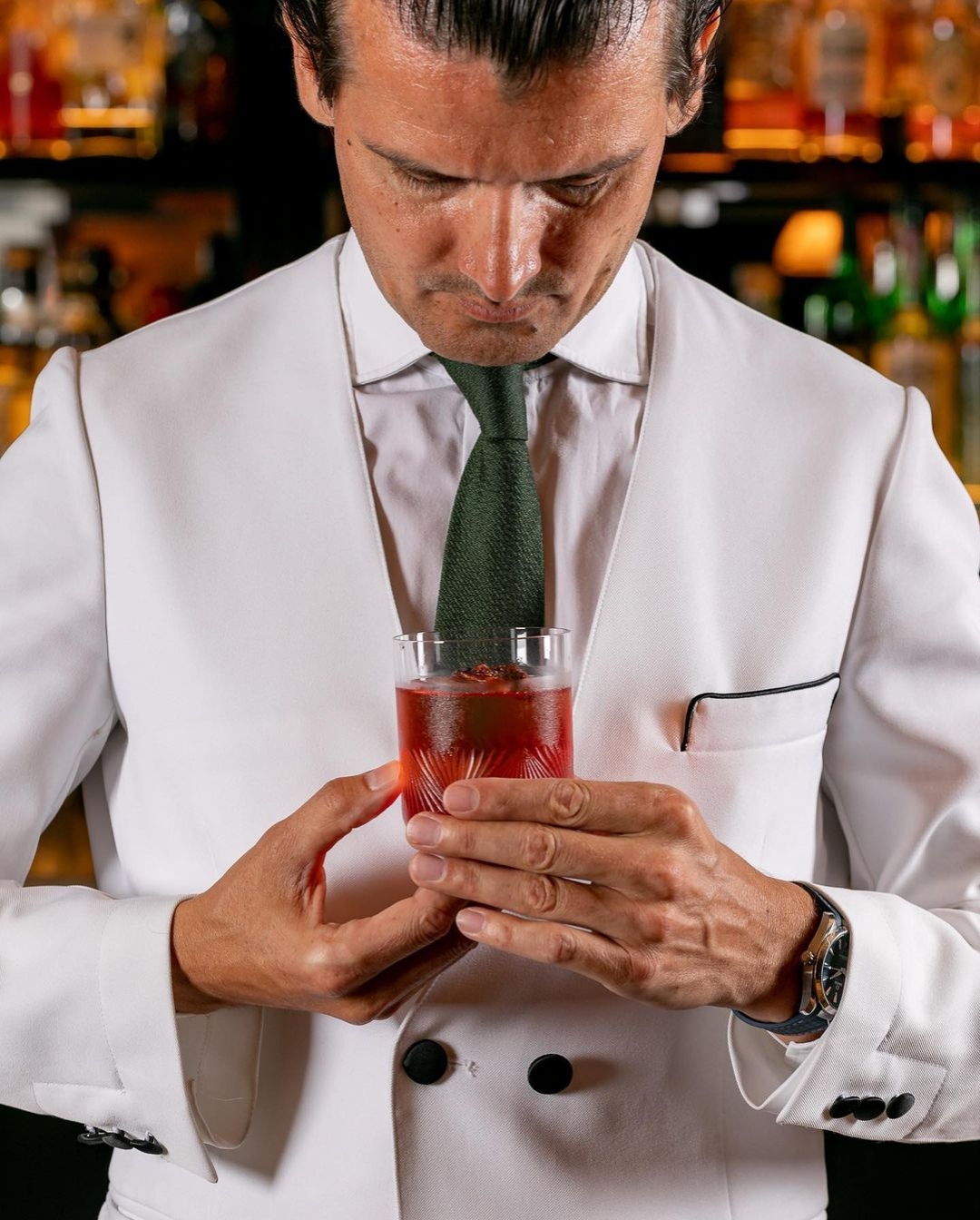
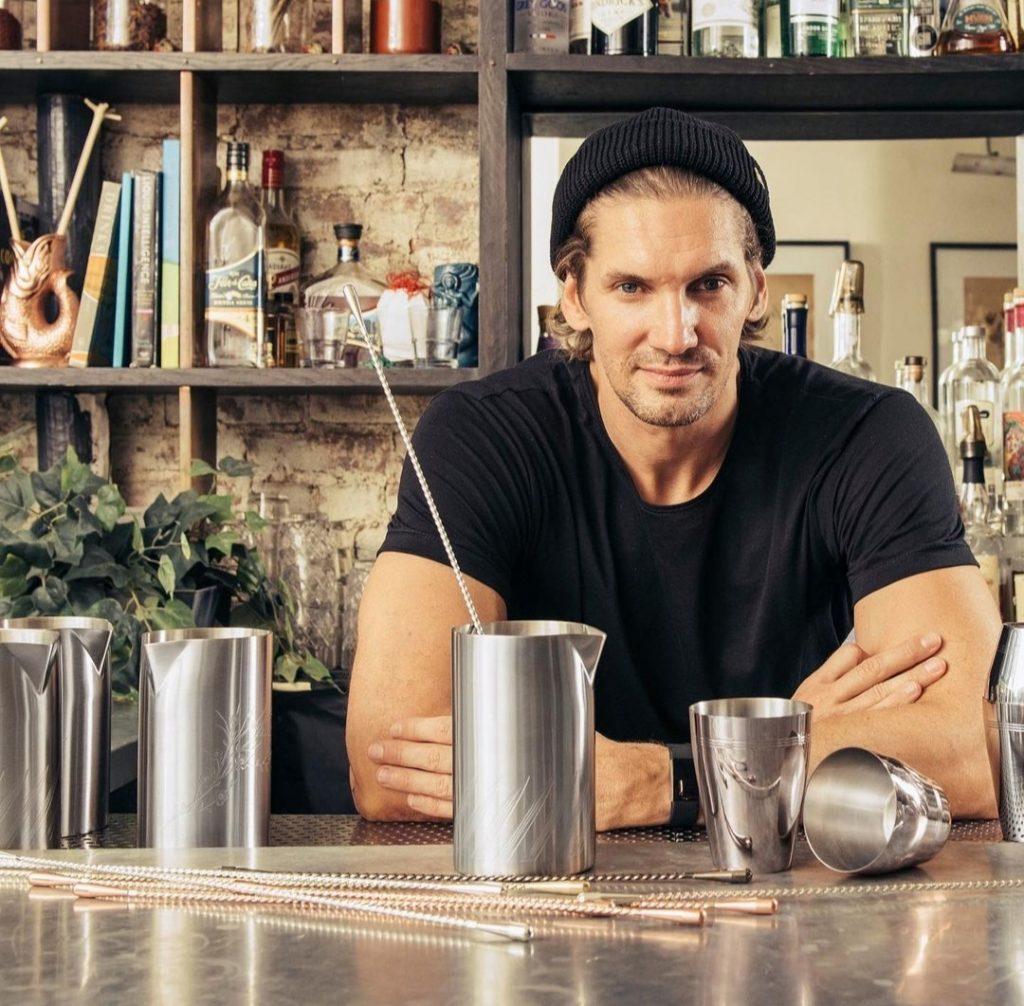
MAKE IT HANDY
Bar tools are, as is the case with any design related matter, often designed to serve one purpose, but when failing to take into account all the challenges they need to cover- it can occasionally forget to include user friendliness. Whether it is a shaker that doesn’t seal properly, or a bar spoon that proves to be more challenging than useful, standard tools can literally be hard to handle: “Every kind of shaker, for example, has its own peculiarity”, De Soto says. “The ones made of two tins are probably the easiest ones to use, they can be stacked and in general yield good results. They can be too big, though”. That’s why, together with the acclaimed online store Cocktail Kingdom, De Soto went on to design his own signature range of bar tools, that include a “handy” shaker: “I wanted to create something for smaller hands, women’s especially, for everyone to develop a good style of shaking. It’s designed to mix just one drink, so it’s not too big, sits perfectly in one hand and that’s all it requires to be shaken: it seals effortlessly and there’s no movement you can’t do”, so forget those hugging, double handed grips on the shaker you still see around. These days, every aspect of the modern bartender’s needs should be considered: Lorincz’s bar spoon is released in two lengths, and particularly the shorter, 300mm one was theorized “considering how much I travel, and it’s easy to pack”. It also features a strainer at the top end for better usability.
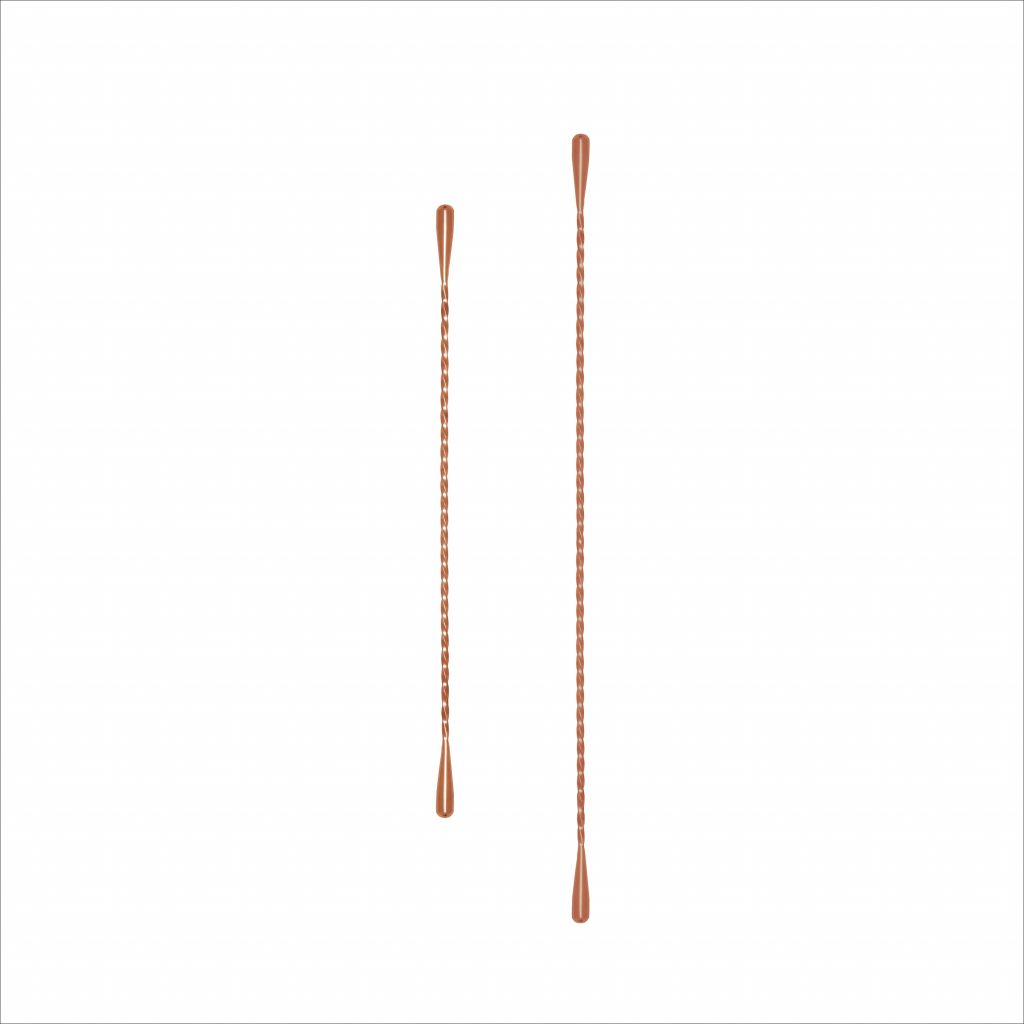
ONE EYE ON THE WALLET
Tools should be considered as pivotal element in a bar’s business plan. Efficient tools lead to faster and more organized work flow and reduce product waste, which translates to higher productivity, increased turnover and at the end of the day, bigger profits. Lorincz’s jiggers set is specifically designed to accommodate any measurement a bartender might need, and for not one single drop of liquid to be wasted: “I found out that a lot of bar professional don’t even fill the jigger properly, either coming short from the top edge or overpouring, and few millimeters could make a big difference: it comes down to the way you grip the jigger, it should be between index and middle finger, with your hands close to the vessel, so it’s easier not to spill”. Birdy’s jiggers feature and combine all the common measures for drinks, from 10ml to 60ml, and are coated with a non-stick Japanese technology, that allows the whole amount of liquid poured to slide out and not sit in the jigger itself, thus granting maximum precision.
The material used for a tool also derives from a similar reasoning: according to De Soto, owner of Danico in Paris (85th in the last World’s 50 Best Bars) and Mace in New York, “Glass is pretty, but it breaks easily and it becomes a cost. It might be helpful because you can see the liquid you pour, but if you measure properly, you don’t need it”. Also, from a simple scientific point of view, steel conducts temperature better: “I found myself stirring in the metal tin of the shaker, to avoid using a mixing glass, which is not efficient. I wanted a mixing tin, but that can be tricky as well, because holding it while stirring, you transfer your warmth to the liquid”. Hence, De Soto and Cocktail Kingdom designed a double layered wall for their mixing tin, with a vacuum space in between that works like a thermos, and isolates the content of it. Speed and efficiency equals to a higher volume of drinks and potentially larger profit, and that requires every little detail: a good bar spoon can take you a long way. As De Soto shares, “the faster you spin the ice, the faster it chills. And when you stir you want to create as little bubbles as possible”; that led to designing a bar spoon that, well, does not have a spoon at the end. A simple stick, that prevents any hindrance with the ice swirling and allows a smoother, quicker movement.
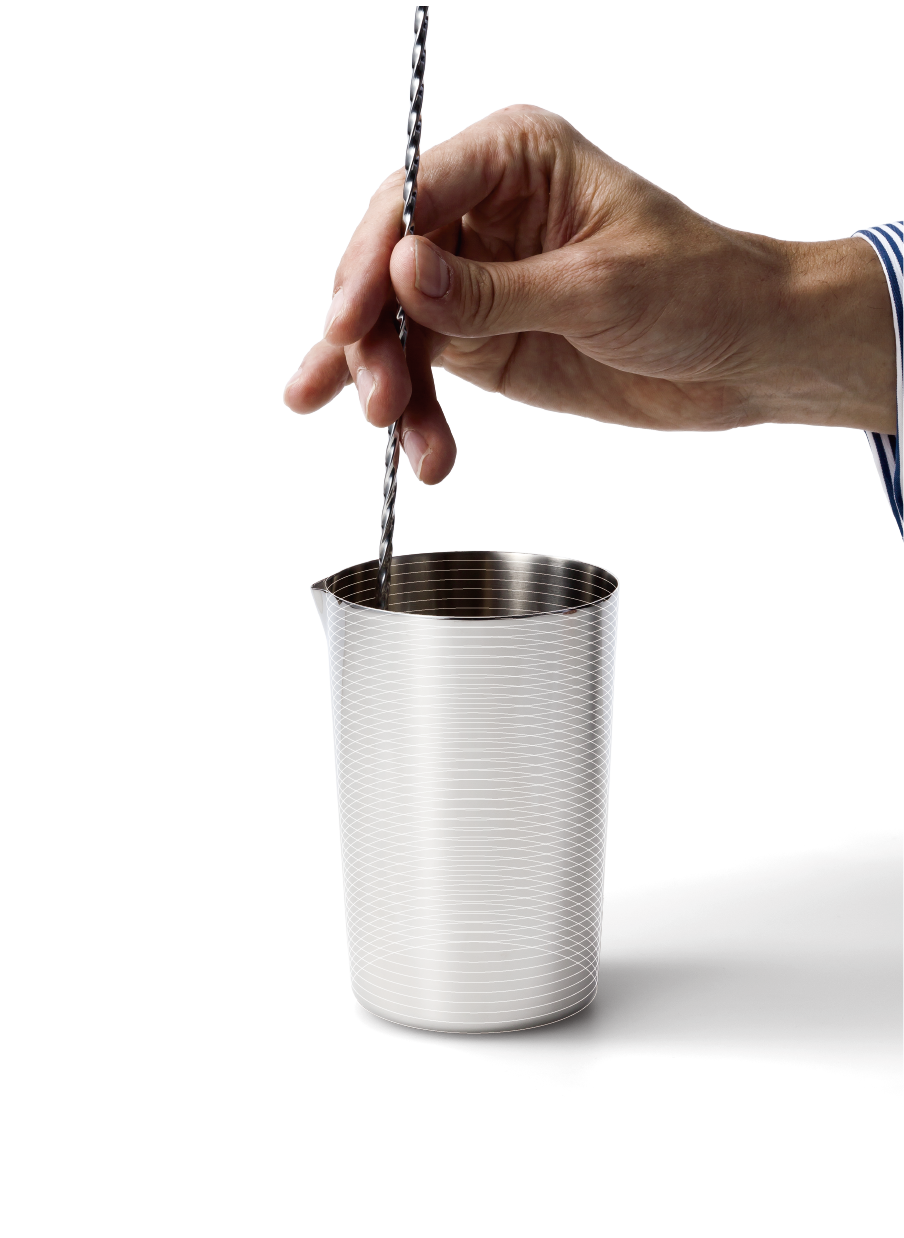
BETTER DESIGN ACUTALLY MAKES TASTIER DRINKS
It’s all in the details, sometimes down to the tiniest ones. Lorincz narrowed it down to a unit of measures: “0.1 micron. That’s how thin the polishing system for Birdy gets”. The polishing, which follows Japanese traditions and age old expertise: “The shaker is polished in a vertical direction, so the ice follows this sort of guidelines and doesn’t break during the shaking movement, contributing to dilution and chill without losing energy. It’s also shoulder shaped, accommodating to the ice, so it now can circulate inside the shaker and not just going up and down”. The mixing glass went through to a similar, yet opposite designing path: “When you stir, you need a circular (or horizontal) polishing, because the key is embracing the movement the ice is supposed to make”. According to Lorincz, the polishing makes the bartedner’s gesture completely different, much smoother and allows to “respect the general rule of Kazuo Uyeda: a Martini is not a minestrone, you shouldn’t even hear the sound of the stir”. The overall result, implementing a properly designed and technologically crafted bar tool, is a cohesive, flawless, perfectly balanced liquid, which actually tastes better.
THE BAG OF TRICKS
With the non-stop evolution of recipes, techniques and innovation the bar world continues to go through, it shouldn’t be surprising for us to find new tools, or reinterpretation of lesser used ones, in the near future. De Soto emphasises the scales, for example, as a very underrated utensil, which always proves to be incredibly useful for the contemporary way of work: “It’s obviously extremely precise, and it prevents from the frequent underpouring jiggers can cause. Also, it’s a life saver when it comes to pre-batching drinks, which can be extremely valuable for guest shifts, quite common nowadays”. While no real new tool can be seen on the horizon (though his signature strainer with egg-separator could account as one), Lorincz rather hopes and predicts something else: “I would love to see more bartenders involved in designing tools. Companies can only go far to a certain point: then the daily professional experience of our community should start to play a bigger role, because only the ones who know the struggle and the tricks of the instruments, can make a difference and improve them, thus positively impacting colleagues and future bartenders“.

